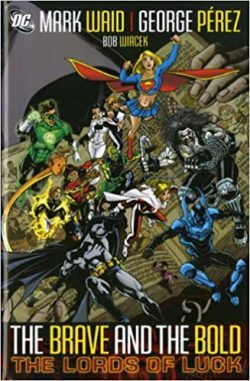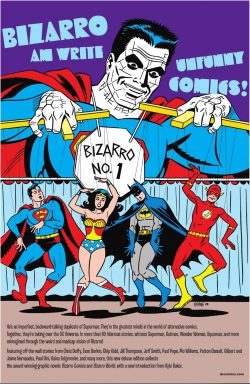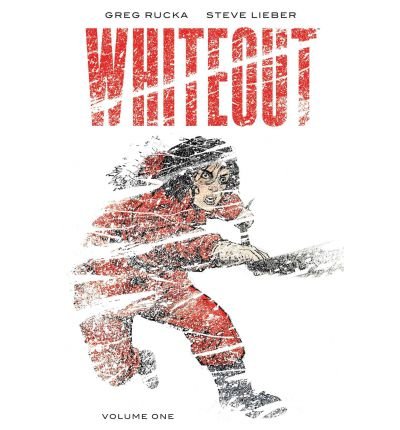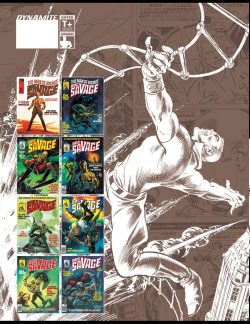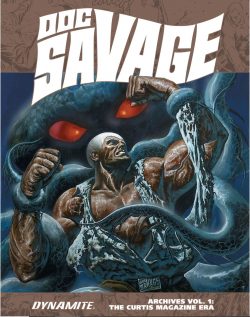
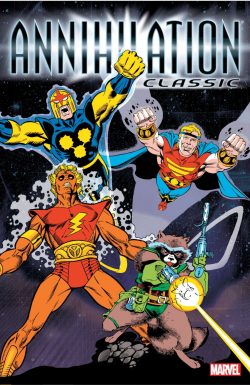
By Todd Dezago, Stan Lee, Larry Lieber, Marv Wolfman, Mark Gruenwald, Bill Mantlo, Doug Moench, Scott Edelman, Roy Thomas, Pat Broderick, Fred Hembeck, Derec Aucoin, Jack Kirby, John Buscema, Paul Ryan, Mike Mignola, Tom Sutton, Mike Zeck, Gil Kane & various (MARVEL)
ISBN: 978-0-7851-3410-7 (TPB/Digital edition)
With the third Guardians of the Galaxy movie set to open on May 5th, here’s a brief reminder of what comics did to inspire the phenomenon: still a grand example of cosmic hero wonderment…
Annihilation was another of those company-wide publishing events that “Changed the Marvel Universe Forever” (and don’t they all?). which ran for most of 2006, involving most of the House of Ideas’ outer space outposts and cosmic characters. Among the stalwarts in play were Silver Surfer, Galactus, Firelord, Moondragon, Quasar, Star-Lord, Thanos, Super-Skrull, Gamora, Ronan the Accuser, Nova, Drax the Destroyer, The Watchers and a host of alien civilisations such as the Kree, Skrulls, Xandarians, Shi’ar, et al, all falling before an invasion of rapacious Negative Zone bugs and beasties unleashed by the insectoid horror Annihilus.
If you’re new to the Marvel universe and that bewildering list of daunting data didn’t leave you screaming in frustration, then please read on…
As is usual in these public herd-thinnings, a number of good guys and bad died and had their trademark assumed by newer, glitzier models whilst some moribund careers got a successful and overdue shot in the arm…
The event spawned a number of specials, miniseries and new titles (subsequently collected as three volumes plus this Annihilation Classic compilation reprinting key and origin appearances of some major players) and led to follow-up event Annihilation: Conquest. Of particular interest to fun-loving screen-watchers might be early appearances of Galaxy Guardians Rocket Raccoon, Groot, Starlord and Adam Warlock…
This sharp selection comprises of and contains pertinent material from Bug #1, (March 1997), Tales to Astonish #13, (December 1960), Nova #1, (September 1976), Quasar #1 (October 1989), Rocket Raccoon #1-4 (May-August 1995) ,Marvel Spotlight #6 (May 1980), Logan’s Run #6 (June 1977) and Marvel Premiere #1 (April 1972) and opens with the frenetic and light-hearted solo outing for Galactic Warrior Bug (originally a cheeky stalwart from the 1970’s toy-license phenomenon Micronauts)…
In ‘Apples and Oranges’ by Tod Dezago, Derec Aucoin, Rich Farber & Ralph Cabrera, the insectivorid from the Microverse accidentally clashes with all-consuming cosmic menace Annihilus and gets stuck in a time/space warp.
Bounced around the history of the Marvel Universe, the warring weirdoes reveal their unheralded contributions to the origin stories of a number of the company’s greatest stars before Bug finally triumphs…
With accompanying pinup by Pat Broderick and hilarious game pages by Fred Hembeck including ‘Bug’s Brain-Tik-lers’, ‘The Help Bug Right the Time/Space Continuum Board Game’, ‘What’s Wrong with This Picture?’ and ‘Bug’s Catch-All Activity Page’, this is a splendidly engaging and irreverent treat, followed by an absolute classic of the gloriously whacky “Kirby Kritter” genre as a humble biologist saved earth from a rapacious walking tree in ‘I Challenged Groot! The Monster from Planet X!’ (Tales to Astonish #13 by Stan Lee/Larry Lieber, Jack Kirby & Dick Ayers).
Next to grab the spotlight is The Man Called Nova who was in fact a boy named Richard Rider. A working-class nebbish in the tradition of Peter Parker – except he was good at sports and bad at learning – Rich attended Harry S. Truman High School, where his strict dad was the principal. His mom worked as a police dispatcher and he had a younger brother, Robert, who was a bit of a genius. Other superficial differences to the Spider-Man canon included girlfriend Ginger and best friends Bernie and Caps, but Rich did have his own school bully, Mike Burley…
An earlier version, “Black Nova” had apparently appeared in the author Marv Wolfman’s fan-mag Super Adventures in 1966 (produced with fellow writer Len Wein), but following a few revisions and artistic make-over by the legendary John Romita (Senior) the Human Rocket launched into the Marvel Universe in his own title, beginning in September 1976, ably supported by the illustration A-Team of John Buscema & Joe Sinnott.
‘Nova’ – borrowing heavily from DC’s Silver Age Green Lantern franchise as well as Spider-Man’s origin – is structured like a classic 4-chapter Lee/Kirby early Fantastic Four fable, and rapidly introduced its large cast before quickly zipping to the life-changing moment in Rider’s life when a star-ship with a dying alien aboard transferred to the lad all the mighty powers of an extraterrestrial peacekeeper and warrior.
Rhomann Dey tracked a deadly marauder to Earth. Zorr had already destroyed the idyllic world of Xandar, but the severely wounded vengeance-seeking Nova Prime was too near death and could not avenge the genocide. Trusting to fate, Dey beams his powers and abilities towards the planet below where Rider is struck by the energy bolt and plunged into a coma. On awakening the teen realises he has gained awesome powers …and the responsibilities of the last Nova Centurion…
Wendell Vaughn debuted in 1977 as S.H.I.E.L.D. super-agent Marvel Boy (Captain America #217), graduating and rebranding as Quasar during a stint as security chief of Project Pegasus during the early 1980s. He finally got an origin with his own title Quasar #1 (cover-dated October 1989).
He learned ‘The Price of Power!’ courtesy of Mark Gruenwald, Paul Ryan & Danny Bulanadi in a rousing romp wherein he washes out of agent training for lack of a killer instinct. Whilst acting in a security detail, Wendell dons alien quantum wrist-bands to stop them being stolen by AIM, even though they had vaporised every S.H.I.E.L.D. operative who had test-piloted them.
As well as not dying, he gained incredible quantum light powers and began a brief but glorious career as an Avenger and Protector of the Universe…
Rocket Raccoon was a minor character who appeared in brief backup sci fi serial ‘The Sword in the Star’ (specifically in Marvel Preview #7 in 1976). He won a larger role in Incredible Hulk #271 (May 1982), and like Wolverine years before, refused to go away quietly.
Reprinted here in its entirety is the 4-issue Rocket Raccoon miniseries (May to August 1985, as crafted by Bill Mantlo, Mike Mignola, Al Gordon & Al Milgrom): a bizarre, baroque sci-fi fantasy blending the edgy charm of Pogo with the biting social satire of One Flew Over the Cuckoo’s Nest, all whilst ostensibly describing a battle between Good and Evil in a sector of space completely crazy even by comicbook standards.
Rocket was one of many talking animals populating the impenetrable, inescapable Keystone Quadrant; a Ranger in charge of keeping the peace as robots and anamorphic beasties went about their holy, ordained task of caring for the distinctly odd and carefree humans known as The Loonies on their idyllic, sybaritic planet Halfworld.
However when a brutal shooting war between voracious apex toymakers Judson Jakes and Lord Dyvyne led to Rocket’s girlfriend Lylla Otter being kidnapped, the planet went wild, or more accurately… ‘Animal Crackers’
In rescuing her, Rocket and his faithful deputy Wal Rus had to contend with a murderous army of mechanised Killer Clowns, face an horrific, all-consuming bio-weapon at ‘The Masque of the Red Breath’ and even team up with arch-foe and disreputable mercenary bunny Blackjack O’Hare before uncovering the horrendous truth behind the mad society he so tirelessly defended in ‘The Book of Revelations!’
The final chapter then shook everything up as ‘The Age of Enlightenment’ saw the end of The Loonies, allowing Rocket and his surviving companions to escape the confines of the eternally segregated Keystone Quadrant into the greater universe beyond…
Starlord (without the hyphen) premiered in 1976, headlining monochrome mature-reader magazine Marvel Preview # 4. He appeared thrice more – in #11, 14 and 15 – during the height of a Star Wars inspired Science Fiction boom.
Years previously, the warrior prince of an interstellar empire was shot down over Colorado and had a fling with solitary Earther Meredith Quill. Despite a desire to remain in idyllic isolation, duty called her starman back to battle and he left, leaving behind an unborn son and a unique weapon. A decade later, the troubled boy saw his mother assassinated by alien lizard men.
Peter Jason Quill vengefully slew the creatures with Meredith’s shotgun, before his home was explosively destroyed by a flying saucer.
The newly-minted orphan awoke in hospital, his only possession a “toy” ray-gun his mother had hidden from him his entire life. Years later his destiny found him, as the half-breed scion was elevated by the divinity dubbed the “Master of the Sun”, becoming StarLord. Rejecting both Earth and his missing father, Peter chose freedom, the pursuit of justice and the expanse of the cosmos…
Here, from Marvel Spotlight volume 2 #6, Doug Moench & Tom Sutton revisit and clarify that origin as the pacifistic Quill and his sentient starship return to Sol and discover the truth about his nativity and ascension as well as the true nature of The Master of the Sun…
Logan’s Run was a short-lived licensed property tie-in, and #6 incongruously featured a 5-page short starring mad Titan Thanos in battle against his precision-crafted nemesis Drax the Destroyer: a typically inconclusive, explosively violent out-world clash over ‘The Final Flower’ crafted by Scott Edelman & Mike Zeck.
This star-studded compilation then concludes with an allegorical masterpiece by Roy Thomas, Gil Kane & Dan Adkins from Marvel Premiere #1. During a time of tremendous social upheaval Thomas transubstantiated an old Lee/Kirby Fantastic Four throwaway foe into a potent political and religious metaphor. Debuting as a dreaded mystery menace, the character dubbed Him was re-imagined as a contemporary interpretation of the Christ myth and placed on a world far more like our own than the Earth of Marvel’s superhero-stuffed universe.
‘And Men Shall Call Him… Warlock!’ adroitly recapitulates the artificial man’s origins as a lab experiment concocted by rogue geneticists eager to create a superman they could control for conquest. After facing the FF, Him subsequently escaped to the stars and later initiated a naive clash with Thor over the rights to a mate before returning to his all-encompassing cocoon to evolve a little bit more.
Now that stellar shell is picked up by the moon-sized ship of self-created god The High Evolutionary who is obsessed with a bold new experiment. Our hand-made hero observes as the savant creates a duplicate Earth on the far side of the sun, fast-forwarding through billions of years of evolution in mere hours. The man-god’s intent is to create a civilisation without aggression or rancour, but the Evolutionary collapses from exhaustion just as proto-hominid becomes Homo Sapien and his greatest mistake takes instant advantage of his exhaustion to meddle with fate…
Years previously Man-Beast had been hyper-evolved from a wolf and instantly became his creator’s nemesis. Now he and his equally-debased minions invade the ship and interfere with the experiment: reintroducing evil to the perfect creatures below and, in fact, making them just like us. At incredible speed Earth’s history re-ran with the creature in the cocoon afforded a ring-side seat to humanity’s fall from grace…
When the High Evolutionary awakes to fight Man-Beast’s army, Him explodes from his shell to help rout the demons, who flee to despoiled Counter-Earth. With calm restored, the science-god prepares to sterilise his ruined experiment: a world now indistinguishable from our own. No superheroes; disease and poverty rampant; injustice in ascendance and moments away from nuclear Armageddon… but the cosmic newborn begs him not to.
He claims the evil tide can be turned and pleads for the Evolutionary to stay his hand. The grieving, despondent creator agreed… but only until the rechristened Adam Warlock should admit that humanity is beyond redemption…
This ends a magnificent compendium of genuine magical Marvel moments: an eclectic but hugely entertaining procession of thrills, spectacle and laughs no comic fan or interested neophyte could possibly resist. And when you’ve read all this, you’ll be properly primed for some wide screen wonders too…
© 2020 MARVEL.

